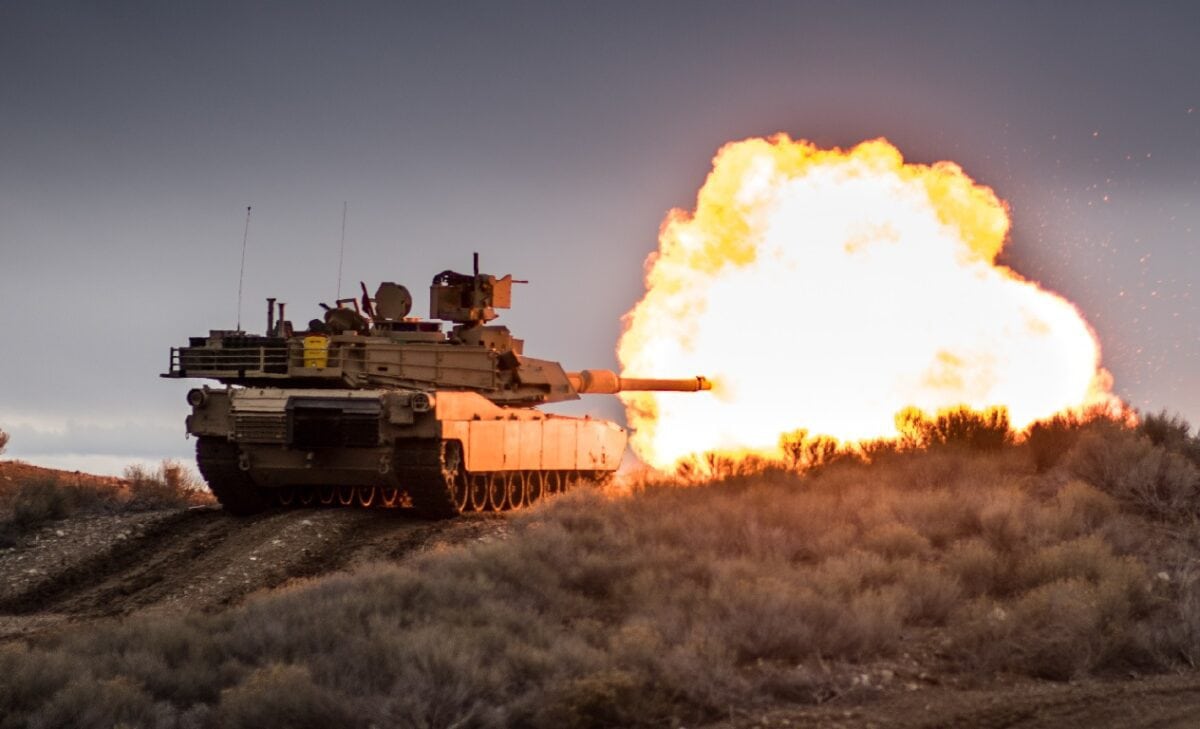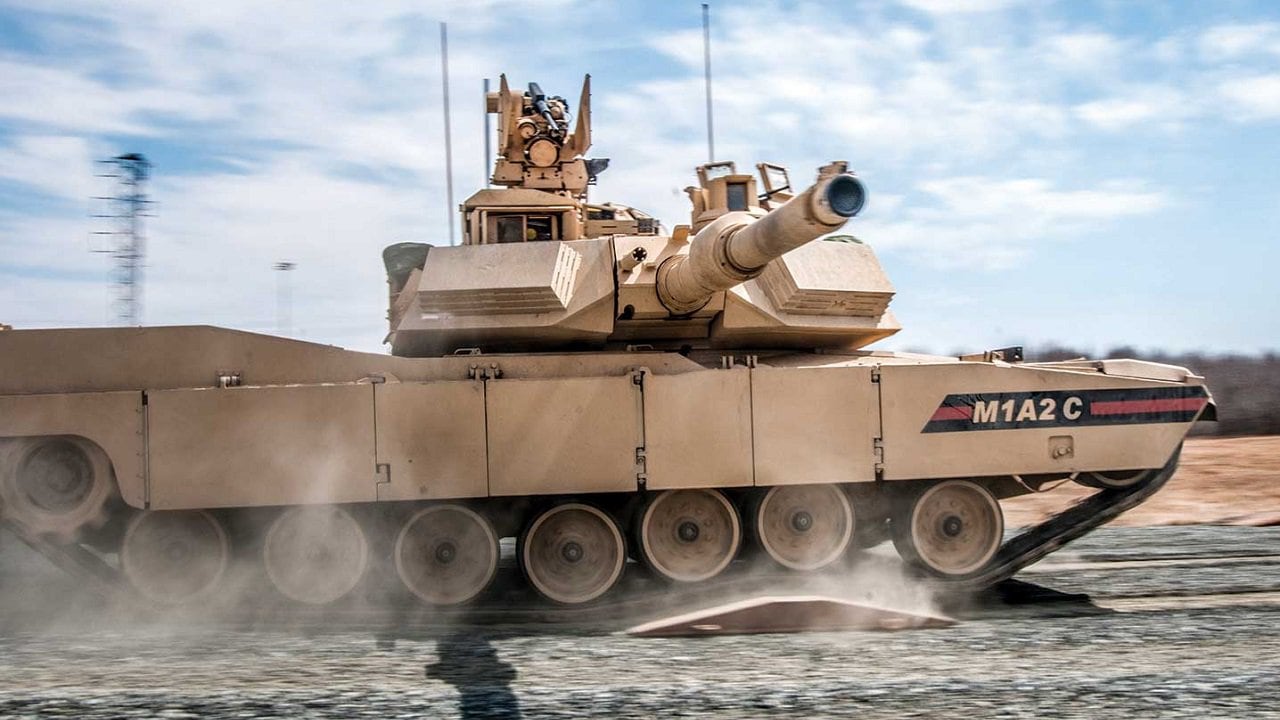More M1 Abrams Tanks Are Headed Closer to Russia – During the Cold War, the United States military developed the M1 Abrams tank for a future conflict against the Warsaw Pact, and it was designed largely for fighting that was expected to occur in Europe where it could provide more mobile firepower for armored formations. However, it was never actually used in combat in Europe (and we should be grateful for that fact) – and only had its baptism of fire during the Persian Gulf War in 1991, when a total of 1,848 M1A1 main battle tanks (MBTs) were deployed to Saudi Arabia to take part in the liberation of Kuwait.
Despite concerns as to how the tanks would handle the sand, as well as apprehension over months with little maintenance, the Abrams proved superior to the Soviet-era T-55, T-62, and even T-72 tanks that were used by the Iraqi military. During the war, only 18 Abrams tanks were taken out of service due to battle damage while only nine were permanent losses. Not a single Abrams crewman was lost in the conflict.
Now more than 40 years after it was introduced, the latest variant of the Abrams – named for the late General Creighton W. Abrams, former Army Chief of Staff and commander of the 37th Armored Battalion – will soon roll into Poland. However, instead of taking part in an invasion, the American-made tanks are heading to the former Warsaw Pact nation to replace the Soviet-era MBTs that the Polish military has operated for decades.
This week, the U.S. Army officially signed a long-awaited contract with General Dynamics Land Systems (GDLS), the Abrams prime contractor, which will see 250 M1A2 System Enhancement Program version 3 (SEPv3) MBTs delivered to Poland under a $1.15 billion contract. It concludes a year-long negotiation with the NATO ally to purchase the fleet of tanks.
“NATO’s strength lies in its unity, which has never been greater than it is today,” said Doug Bush, assistant secretary of the Army for Acquisition, Logistics and Technology, and the U.S. Army’s acquisition executive. “This award is an example of the Army’s continuing work with our industry partners to increase production of critical military equipment capabilities to ensure we continue to meet the needs of our partners and allies.”
Improved M1 Abrams
The M1A2 SEPv3 configuration features technological advancements in communications, fire control and lethality, reliability, sustainment, and fuel efficiency, plus upgraded armor. Additionally, the SEPv3 Abrams is designed to seamlessly accept future upgrades. The U.S. Army has said the delivery of the tanks will further improve the U.S. Army’s interoperability with the Polish armed forces and will significantly boost the nations’ combined military deterrence strength.
“We are pleased to have been chosen to provide this critical armored capability to our allies in Poland,” Chris Brown, vice president of global strategy and international business development at General Dynamics Land Systems, said via a company statement. “The M1A2 SEPv3 Abrams is the most advanced main battle tank in the world, and we look forward to getting it into the hands of Polish Soldiers.”
Stern Warning to Russia?
Poland shares a border with the Russian exclave of Kaliningrad in the north, and a nearly 250-mile border with Belarus, a staunch ally of Russia. Warsaw has expressed concerns over Russian aggression, and the deal for the tanks came as Russia’s war in Ukraine entered its sixth month.
The U.S. State Department had cleared the sale of the advanced Abrams tanks to Poland in February, just days ahead of Russia’s unprovoked and wholly unwarranted invasion of Ukraine. It was part of a larger $6 billion package approved in February that included counter-IED systems, hundreds of machine guns, 26 M88 recovery vehicles, 17 Joint Assault Bridges, and other military systems.
“Poland’s acquisition of the M-1 SEPV3 Abrams, the world’s best main battle tank, makes eminent sense,” explained Dan Gouré, senior vice president at the Lexington Institute, a nonprofit public-policy research organization headquartered in Arlington, Virginia, in an interview with 19FortyFive.
“The purchase not only will significantly improve the capabilities of the Polish Army but enhance interoperability with the U.S. Army and contribute to the enhancement of NATO’s conventional deterrent,” Gouré told 19FortyFive. “The US should offer Warsaw additional M-1s instead of making Poland go to South Korea for more tanks.”

Tankers with Alpha Company, 2nd Battalion, 116th Cavalry Brigade Combat Team, conducts platoon live-fire gunnery qualification Feb. 4, 2019, at the Orchard Combat Training Center. The Idaho Army National Guard Soldiers are preparing for the 116th Cavalry Brigade Combat Team’s upcoming rotation at the National Training Center, Fort Irwin, Calif., later this year. Note: This is an example of an M1 Abrams tank firing, not a STAFF round demonstration.
M1 Abrams Partnership Program
Poland formally requested the tanks in July of last year, and delivery of the SEPv3 models is now expected to begin in January 2025. The Polish military has announced plans to integrate the M1A2 Abrams with its Army’s 18th Mechanized Division.
In addition to receiving the 250 tanks, the Abrams Partnership Program provides additional supplemental training on the Abrams, building interoperability, a key component to stand side-by-side with Poland, a NATO ally. The Army has announced that the program is a collective effort of the 7th Army Training Command, the Joint Multinational Readiness Center, V Corps, and U.S. Army Europe and Africa. The total participation builds on strength and team cohesion with Poland and other Allies and partners, improves warfighting mastery, and ensures the U.S. and Poland remain disciplined, resilient, lethal, and ready to fight and win against global threats.
The U.S. Army began training Polish soldiers on 28 Abrams tanks that were transported to Poland last month.
“Poland has been a stalwart ally since its accession as a formal party member of NATO over 20 years ago and has remained a bulwark to the Alliance’s eastern defense,” said U.S. Army V Corps Commanding General Lt. Gen John Kolasheski. “Today, with the opening of the Tank Training Academy, Poland reaffirms its commitment to its Allies and their resolve to any would-be adversaries.”
The purchase of the 250 tanks will likely result in even closer ties between Washington and Warsaw and could serve as a serious deterrent to Moscow’s aggression in Eastern Europe. It will require Poland to adapt as it phases out its Soviet-era MBTs and makes the transition to the Abrams.
“Acquiring the M1 is only the first step in the process of creating and sustaining a modern main battle tank capability,” added Gouré. “Poland will need to stand up a maintenance and repair facility for the M1s. Personnel will need to be trained. This will be useful in support of U.S. heavy armor deployed to that country on a continuing basis. There are opportunities for Polish industry to provide spare parts for the Abrams.”
Expert Biography: A Senior Editor for 1945, Peter Suciu is a Michigan-based writer who has contributed to more than four dozen magazines, newspapers, and websites with over 3,000 published pieces over a twenty-year career in journalism. He regularly writes about military hardware, firearms history, cybersecurity, and international affairs. Peter is also a Contributing Writer for Forbes. You can follow him on Twitter: @PeterSuciu.

